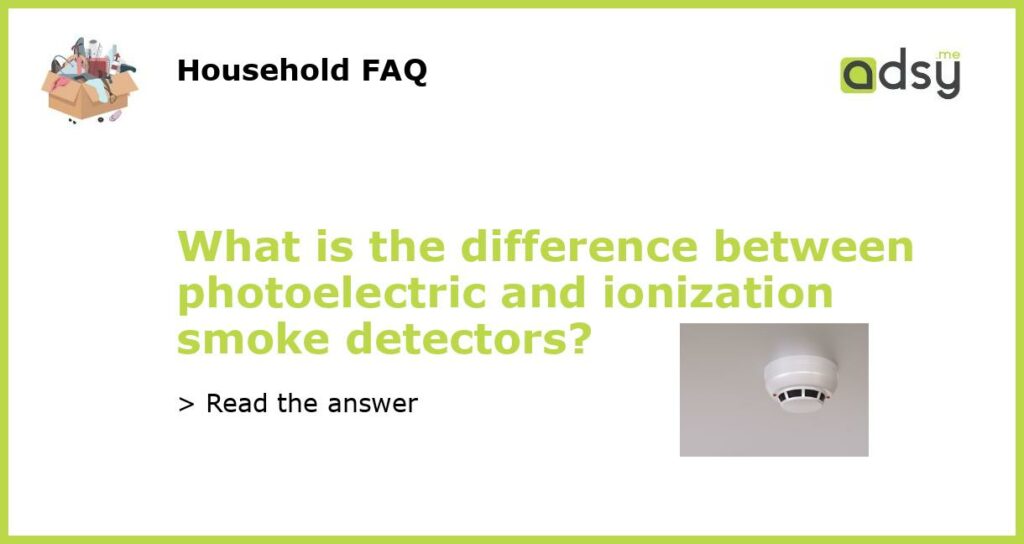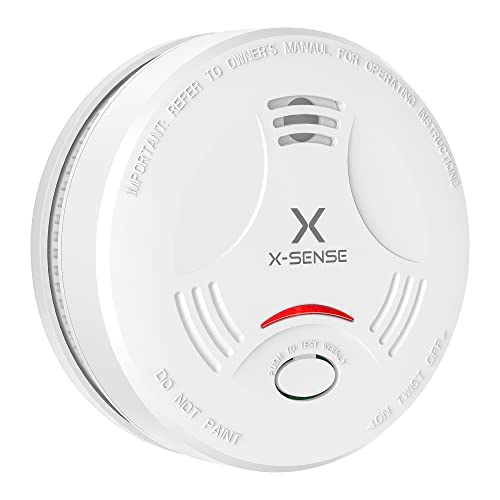Photoelectric Smoke Detectors
Photoelectric smoke detectors are a type of smoke detector that use a beam of light to detect the presence of smoke particles in the air. They work by emitting a light source, typically an LED light, into a chamber. When smoke enters the chamber, it scatters the light particles and triggers the detector. This type of smoke detector is known for its ability to quickly detect smoldering fires, which produce a large amount of smoke before flames appear.
One of the main advantages of photoelectric smoke detectors is their ability to quickly respond to smoldering fires. These types of fires can smolder for hours before erupting into full-blown flames, and they are often responsible for the majority of fire-related injuries and deaths. By detecting the presence of smoke at an early stage, photoelectric smoke detectors can provide an early warning and give people more time to escape the premises.
Ionization Smoke Detectors
Ionization smoke detectors, on the other hand, use a small amount of a radioactive material to ionize the air inside the detector. This creates a small current of charged particles between two electrodes. When smoke enters the chamber, it disrupts the current and triggers the alarm. These types of smoke detectors are better at detecting flaming fires, which produce small smoke particles but generate a significant amount of heat.
One of the main advantages of ionization smoke detectors is their ability to quickly detect flaming fires. These types of fires tend to spread rapidly and can quickly engulf a room or building. By detecting the presence of flames at an early stage, ionization smoke detectors can provide an early warning and alert occupants to the danger.
Differences in Sensitivity
One of the main differences between photoelectric and ionization smoke detectors is their sensitivity to different types of fires. Photoelectric smoke detectors are more sensitive to smoldering fires, while ionization smoke detectors are more sensitive to flaming fires. Smoldering fires produce larger smoke particles that scatter light and trigger photoelectric detectors, while flaming fires produce small smoke particles that disrupt the ionization current and trigger ionization detectors.
This difference in sensitivity means that each type of smoke detector is more effective at detecting a specific type of fire. Photoelectric smoke detectors are generally recommended for areas near bedrooms or living areas, where smoldering fires are more likely to occur. Ionization smoke detectors are generally recommended for areas near kitchens or garages, where flaming fires are more likely to occur.
Combination Smoke Detectors
To provide the highest level of protection, many smoke detectors are now designed to incorporate both photoelectric and ionization technology. These combination smoke detectors are able to detect both smoldering and flaming fires, providing a more comprehensive warning system. They are often installed in multiple locations throughout a building to ensure maximum coverage.
Combination smoke detectors are particularly recommended in residential homes, where both types of fires can occur. By combining the strengths of both photoelectric and ionization technology, these detectors can provide a faster and more accurate response to all types of fires.
Which Type of Smoke Detector is Best?
The best type of smoke detector depends on the specific needs and circumstances of the location where it will be installed. In general, a combination smoke detector is the most reliable choice, as it provides comprehensive detection capabilities for both smoldering and flaming fires.
However, if you need to choose between a photoelectric smoke detector and an ionization smoke detector, it is important to consider the specific risks and hazards of the area. If you are more concerned about smoldering fires, such as those that may occur near bedrooms or living areas, a photoelectric smoke detector may be the best choice. If you are more concerned about flaming fires, such as those that may occur in a kitchen or garage, an ionization smoke detector may be the best choice.
In any case, it is important to install smoke detectors in every level of your home or building, as well as in every bedroom and near common areas. Regular testing and maintenance of smoke detectors is also essential to ensure their proper functioning.






